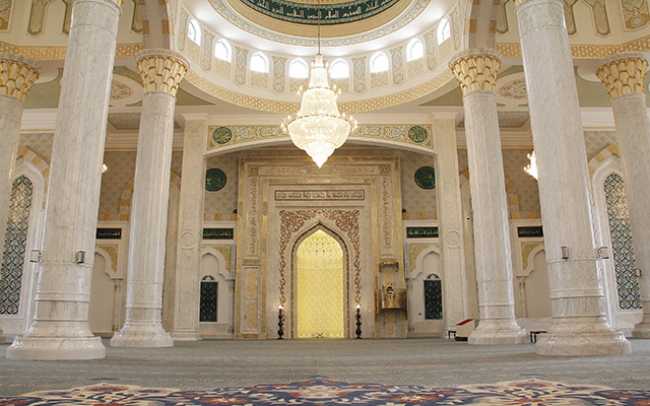RCF powers 10,000 person mosque
Published: WORSHIP

KAZAKHSTAN: The 60,000 sq-m worship area of the Astana Hz. Sultan Mosque in Kazakhstan’s capital city Astana is now being covered by an RCF TT+ sound system. The project at the 10,000 capacity house of worship was handled by Turkish systems integrator Asimetrik.
Astana Hz. Sultan Mosque’s main hall has one main and eight smaller cupolas. The main has a diameter of 28m and a height of 43m. All floors are covered with specially woven carpets, resulting in a fair absorption on the higher end. However, aside from this most surfaces except for the floors are covered with marble or tiles. While stunning to look at, this beauty has a price to pay acoustically, as the halls are extremely reverberant especially on the lower end. As a result, the electroacoustical design was the biggest challenge for Asimetrik.
The complete structure was modelled in EASE 4.3 and an exhaustive design process started. The designers experimented with speaker numbers and placement to keep the intelligibility and sound pressure levels as high as possible while taking into consideration that even the breathing of 10,000 people is a significant noise.
Since the construction schedule was very tight, time spent for design was of a big issue. After several days of around the clock recalculations, Asimetrik engineers decided on the final design using RCF’s TT+ Touring and Theatre series speakers. These not only solved the reverberation issues but also provided the power needed for the halls.
TTL11A-H and TTL11A-B arrays have been placed on either side of the mihrab to provide the main source with six delay lines of TT051A speakers in the main hall. Another TLL11A-H and TTL11A-B array for the extended praying area with two more delay lines of TT051A speakers to fill in all the corners have also been installed. To ensure the system was as discrete as possible all these speakers were custom painted to match the colours of the marble and tiles.
Following the installation further acoustic measurements were taken. These proved the design to be right, and showed remarkable coherence to the computer model.
